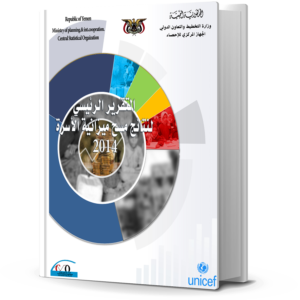Household Budget
Latest Launches
Background
Central Statistical Organization seeks to build a database related to household income and expenditure, which contributes to providing demographic, economic, and social data to the competent authorities in formulating policies, programs, and decision-making to improve the opportunities for development decision-making based on studied scientific foundations.
Surveys are conducted related to this aspect, including the Household Budget Survey, the last survey was conducted in 2014. However, in view of the continuous changes in the consumption pattern and severe price changes in addition to population movement, CSO seeks to conduct an annual update of household expenditure and income data by resuming this survey in a regular manner annual.
Methodology
-
1.Identifying patterns of household consumption expenditure .
2.Calculating components of expenditure (demand) on various consumer expenditure items for use in calculating inflation rates.
3.Calculate the average individual and household expenditure, and determine the factors affecting expenditure, such as income, education, occupation, etc.
4- Calculating the average individual and household income, and the individual or household’s share of total income, and linking it to the factors affecting it, such as educational level, profession, economic activity, etc.
5- Distribution of families and individuals according to income categories, expenditure, educational level, and occupation.
6- Estimating the current demand for goods and services.
7- Helping predict the population’s future needs for goods and services.
8- In addition, measuring average wages, and the impact of this on household expenditure .
9- Calculating poverty indicators, determining the characteristics of poor, and preparing poverty maps.
10- Providing weight data that reflects the relative importance of consumer expenditure items and which are used in preparing the consumer price index and thus inflation.
11- Providing data that enters into the composition of national accounts related to final consumption and income for the household sector.
Most Important Indicators
There are many indicators result from the household budget survey, including:
First: Household characteristics Indicators :
1- Resident population Distribution by urban status.
2- Population distribution by urban status, quintiles, broad age groups, and gender ratio.
3- Resident population Distribution by urban status, quintiles, broad age groups and gender.
4- Average age of population by urban status and gender.
5-Median age of population by urban status and gender.
6- Age dependency of the population according to urban status.
7- Average age at first marriage by urban status and gender.
8- Percentage distribution of population 10 years and over by marital status, urban status, and gender.
9- Average family size (number of family members) according to urban status.
10- Percentage distribution of population by educational level and gender (urban, rural, total).
Second: Housing characteristics Indicators :
1-Distribution of housing and individuals by housing type – in urban and rural areas of the Republic.
2-Distribution of dwellings and individuals according to the dwelling’s water sources
3- Distribution of dwellings and individuals according to the means of delivering water to the dwelling
4- Distribution of dwellings and individuals according to the means of sanitation for the dwelling – in urban and rural areas of the Republic
5- Distribution of dwellings and individuals according to the source of lighting for the dwelling
6- Distribution of dwellings, families and individuals according to cooking fuel
7- Distribution of housing and individuals according to the environment surrounding the housing
8- Distribution of housing and individuals according to the type of housing ownership
Third: Income indicators:
1-Total net annual income of individuals and households according to different sources of income and the urban status of the Republic.
2-Distribution of the total annual net income of households according to sources of income and urban status.
3-Distribution of total net annual income, population, and total households in urban and rural areas of the Republic
4-Annual net income average of households , the number of residents, and the number of households that have income or revenue from private business activities and self-employed workers (non-agricultural) in urban and rural areas of the Republic.
5- Annual net income average per capita, population, and number of individuals who have income or revenue from private business activities and self-employed workers (non-agricultural) in urban and rural areas of the Republic.
6- Annual household income average (net) according to different sources of income and the urban status of the Republic.
7-Comparison of Annual per capita income average (general and net) according to different sources of income and the urban status of the Republic.
8-Percentage distribution of the total annual income of Households from private business activities and the self-employed according to quintiles and urban status in the Republic.
9- Monthly income average of households from private business activities and self-employed (non-agricultural) according to quintile categories and urban status in the Republic.
Bulletins
information Bank
Statistical Tables
Meta data for Indicators
Coming soon
Interactive Dashboard
Coming soon

Contact Information

roza.a@cso-ye.org

روزا عبدالكريم سلام محمد

009672204446
